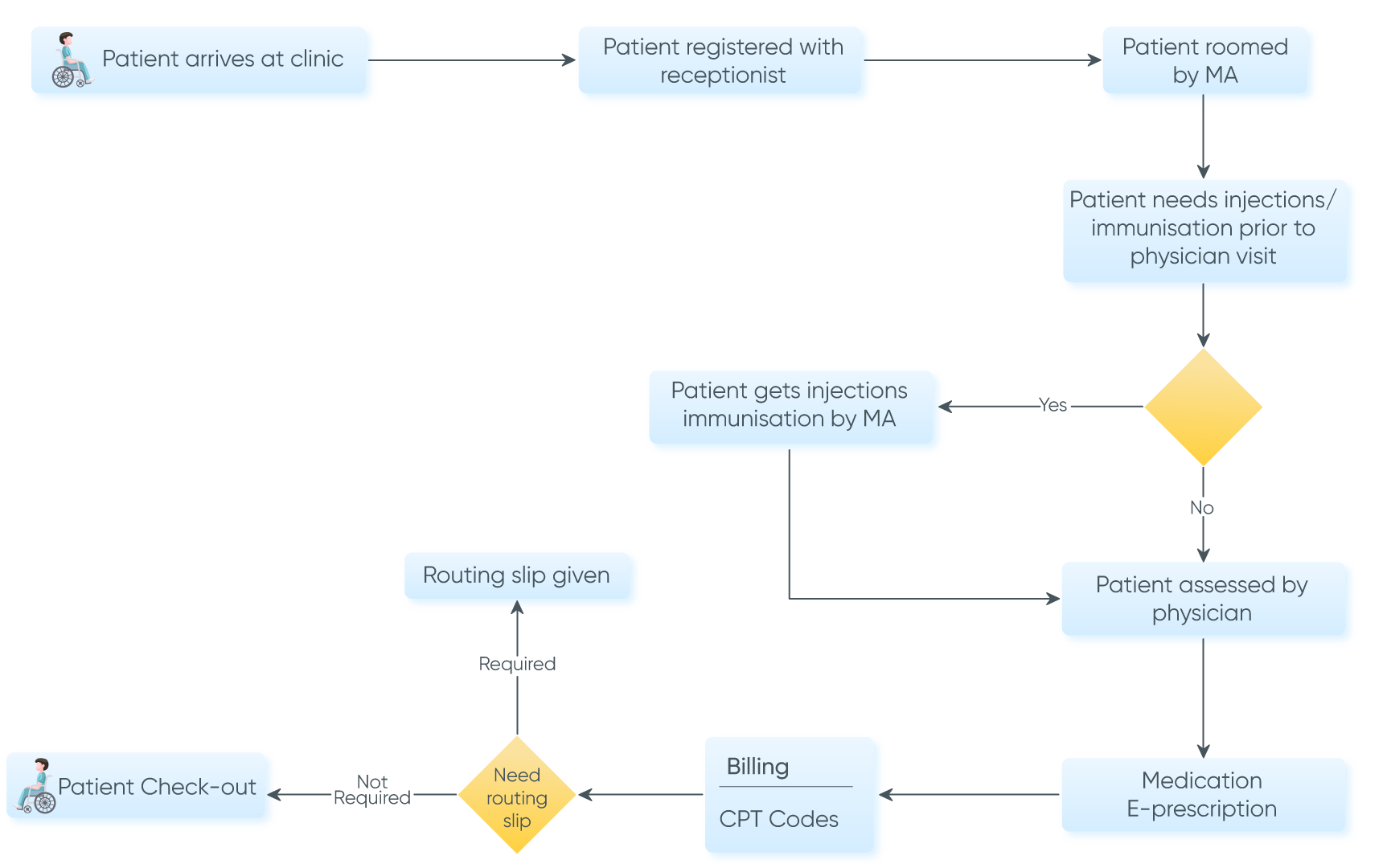Overview
The US-based client group provides Primary Care services to the patients. Hospitals include general check-ups, vaccinations, screenings, and treatment for minor illnesses. The clinic had three locations, but managing patient data and providing timely care was challenging due to in-person and paper-based record-keeping.
Business challenges
The client wanted to develop a Custom primary care EMR software that improves practice efficiency and patient care. The healthcare provider needs help handling many patients and must reduce manual administrative work.
The healthcare provider requested telehealth integration, e-prescription, and lab/imaging integration features in the application to streamline their workflows and reduce manual tasks.
The client wants to sell EMR software to other healthcare providers. We have provided them with a super admin portal to manage practices and their locations.
Thinkitive Solution
Thinkitive’s business analysts and SMEs connected with the client to understand the client's requirements. After connecting multiple times with the client, the team has finalized the requirements as per the priority.
The team has created a Business requirements document and a Software requirement specification document, which includes workflows, use cases, and low wireframe fidelity.
Thinkitive offers a ready-to-use component that requires assembly and customization based on the client's specific practice workflow. This can significantly reduce project timelines and costs.
Based on requirements, we have created software that includes three portals
- Admin Portal
- Provider Portal
- Patient Portal

Solution Highlights
Based on features, we have created an application that has a provider portal and a patient portal-
-
1. Admin Portal
The Super Admin can manage practice onboarding and their respective locations, aiding the client in generating more revenue through software sales.
-
2. Provider Portal
a) Seamless Patient Onboarding and Intake
This feature helps front desk staff register new patients electronically in the software. It includes patient demographics, medical history, and insurance details. Patients have the capability to register themself from the hospital website.
b) Appointment Scheduling System
This feature helps front desk staff and healthcare providers schedule patient appointments. Only required information is taken, so it saves time. Front desk staff can book appointments with the following activities
- Location
- Provider
- Select the date and time
- Reason for appointment
Modify, Reschedule, or cancel appointments at the patient’s and provider’s convenience
c) Availability Management
This feature helps healthcare providers manage their working hours so patients can book appointments. The availability can be customized by doing the following activities
i. Locations
ii. Providers
iii. Appointment type
iv. Appointment time
v. Select buffer time between appointments
vi. Select block time for unavailability
d) Encounter-SOAP Notes
Customizable templates help healthcare providers to capture patient’s medical information electronically. Using fewer clicks and suggestions reduces manual entries and improves accuracy.
i. Subjective
ii. Objective notes
iii. Vitals
iv. Medication
v. Diagnosis
vi. Assessment & Plan
vii. CPT codes
viii. Follow-up date
e) Telehealth Integration
Telehealth integration helps healthcare providers to consult patients and provide medical treatment remotely. It saves time on in-person visits, transportation, and cost of transportation. We developed HIPAA-compliant software for secure video consultation.
f) e-Prescription
The E-prescription feature helps healthcare providers create medical orders and diagnostic Tests for pharmacies and laboratories. The order can be placed electronically within a second, and the order can be placed through software.
g) Secure Communication
This feature allows healthcare providers to communicate with patients securely through video calls, voice calls, and messages as the software is HIPAA compliant. Also, providers can share medical reports and suggestions.
h) Billing and Coding for Claims
This feature suggests healthcare providers accurate diagnosis and procedural codes as per the treatment provided. It ensures accuracy and reduces claim denial. This results in getting a more immense reimbursement amount from the payer.
-
3. Patient Portal
We have developed a web application under which the patient portal is mobile compatible and can be used by patients. It helps patients view and schedule their appointments, medication details, treatment plans, and follow-up dates.
a) Appointment Scheduling
This feature helps patients to schedule appointments at their convenience with the help of a patient portal.Selecting a time, date, and specialist for the appointment.Reschedule or cancel a scheduled appointment.
b) Accessibility to Medical Information
This feature helps the patient view their test results, test reports, and medication plan and track the status of lab and medicine orders.
c) Patient Education Material
This feature allows patients to view documents that provide information about diseases, lifestyle changes, and diet recommendations.
Value Delivered
-
Enable healthcare providers to encounter more patients via telehealth feature.
-
Patient health information is stored electronically. It is quickly accessible to healthcare providers.
-
Lab and pharmacy integration helps speed up treatments and improves medication transparency. Results in improved patient care.
-
Reduction in time for administrative tasks such as patient registration and appointment scheduling.
-
Billing and coding suggestions improve accuracy and claim success ratio. Results in more reimbursed amounts for practices.
-
Enables patients to access their medical information, appointment scheduling, and education material, improving patient engagement with treatment.
-
Electronic claim submission reduces claim denials and saves time compared to paper one.
